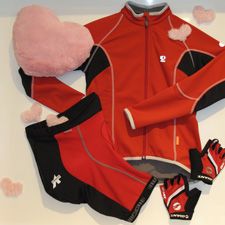When Bonnie Tu selected the location for the Liv / Giant store in Taipei, people thought she was crazy. The location was in the main business area where banks and major corporations were located, far from the central shopping district.
But Tu said the location needed to be next to the target customer. Tu wanted to attract more affluent women with disposable income, many of whom worked at banks nearby and could easily drop by at lunch to pick up a new jersey or come in after work to attend one of the shop’s evening clinics. And across the street on a center island women could safely test ride bikes on a protected bike path.
Her gut instinct proved correct. Tu, the executive vice president and CFO for Giant, said the store broke even after just three months in operation.
Tu, who oversaw Giant’s initial public offering in 1994, took on the project to launch Giant / Liv as the company’s first dedicated women’s store. As a cyclist who rides at least two times a week including a 45-kilometer commute home from the office every Wednesday, she was frustrated by retailers’ lack of attention to women and women’s gear.
“With this shop, we are trying to woo women into cycling,” she said.
The concept is revolutionary in Taiwan, where women generally don’t participate in athletics and cycling is a pastime, not a long-distance sport as in the States.
Obstacles still exist: Asian women don’t want to get a tan from being outside and they fear looking masculine on a bike. But with a focus on fashion and lifestyle, Giant’s boutique is making inroads with upper-class, executive women, said Tu while giving BRAIN publisher Marc Sani and I a tour the day before the Taipei Cycle Show.
Giant spent $300,000 to renovate and merchandise the 264-square-meter retail and office space. The first floor of the two-level store is designed like a gallery with a few select bikes and shadow boxes merchandised with clothing and accessories. Downstairs, the shopping area is well lit with light boxes and mirrors on the walls. The furniture is a modular design so it can be moved for classes on fit and minor mechanical issues.
The entire gallery and shopping area is white, creating a simple clean aesthetic that highlights product. The store also features two dressing rooms and shower facilities for women to clean up after weekend shop rides.
Nikki Jan, marketing associate specialist for Liv, said in most Giant stores the split between bikes and apparel is 60-40. In the Liv store, it’s just the opposite. Jan said women spend more money on apparel and accessories because they want to look pretty and color-coordinated on bikes.
As the company’s first women’s only store, it is serving as a pilot project not just for Giant Taiwan, but also for Giant Global as it develops a retail strategy to lure more women into cycling.
Liv could develop into a new business model for bike retail. Tu is looking into locations in Tokyo to launch its next Liv store. And Giant USA is closely watching the model and considering a similar retail concept in the United States, said Elysa Walk, general manager of Giant USA. “I think it would be very successful,” Walk said.

Bonnie shows Marc and I around the Liv / Giant store in Taipei, which she says is about selling a lifestyle, not bicycles.

The ground floor of the store is designed like an upscale gallery, with bikes instead of art.

Shadow boxes on the wall are creatively merchandised for Valentine’s Day.

A female shopper tries on gloves. She fits into the primary customer demograpic: women ages 30-50 with disposable income.


